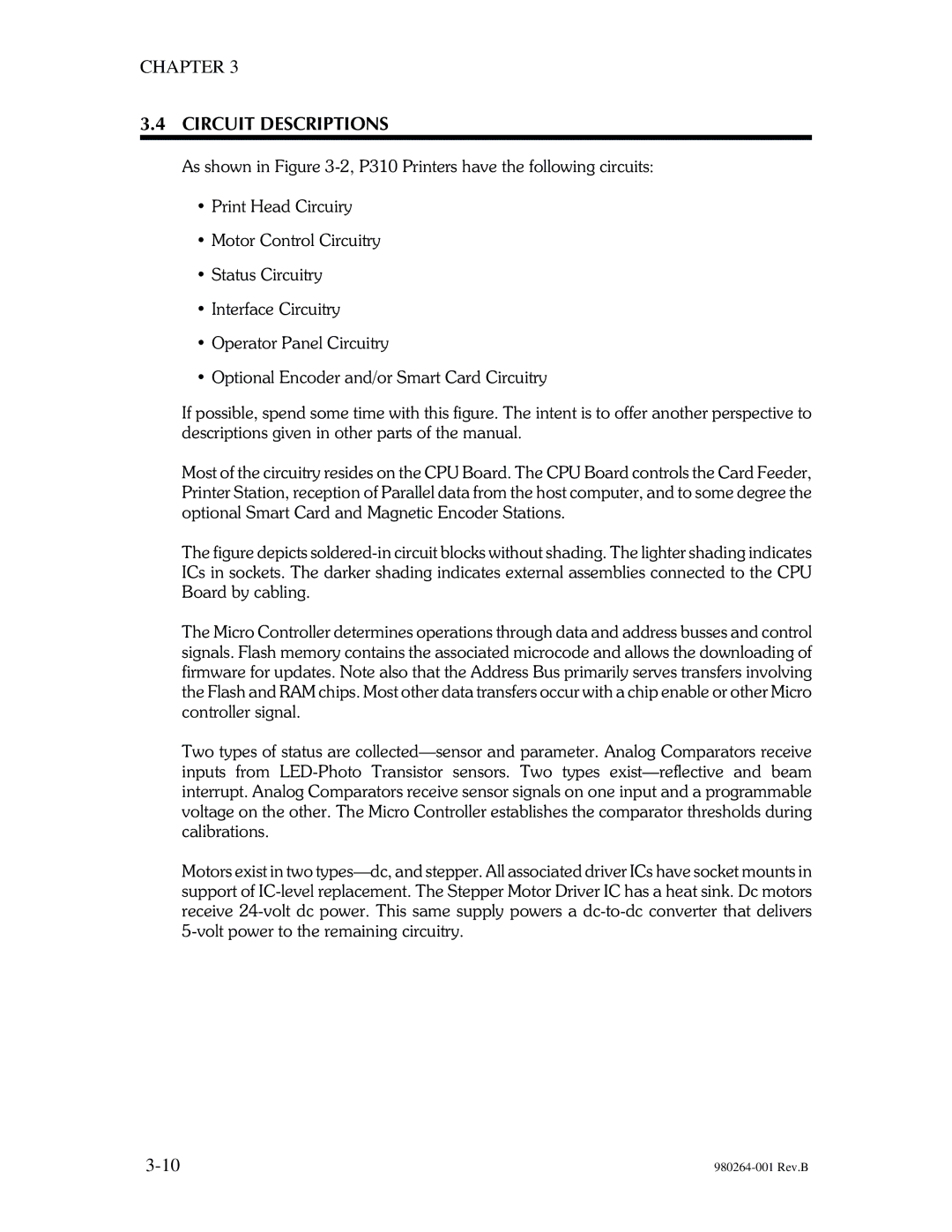CHAPTER 3
3.4CIRCUIT DESCRIPTIONS
As shown in Figure
•Print Head Circuiry
•Motor Control Circuitry
•Status Circuitry
•Interface Circuitry
•Operator Panel Circuitry
•Optional Encoder and/or Smart Card Circuitry
If possible, spend some time with this figure. The intent is to offer another perspective to descriptions given in other parts of the manual.
Most of the circuitry resides on the CPU Board. The CPU Board controls the Card Feeder, Printer Station, reception of Parallel data from the host computer, and to some degree the optional Smart Card and Magnetic Encoder Stations.
The figure depicts soldered-in circuit blocks without shading. The lighter shading indicates ICs in sockets. The darker shading indicates external assemblies connected to the CPU Board by cabling.
The Micro Controller determines operations through data and address busses and control signals. Flash memory contains the associated microcode and allows the downloading of firmware for updates. Note also that the Address Bus primarily serves transfers involving the Flash and RAM chips. Most other data transfers occur with a chip enable or other Micro controller signal.
Two types of status are
Motors exist in two
